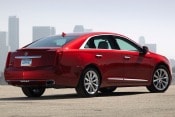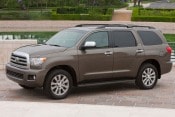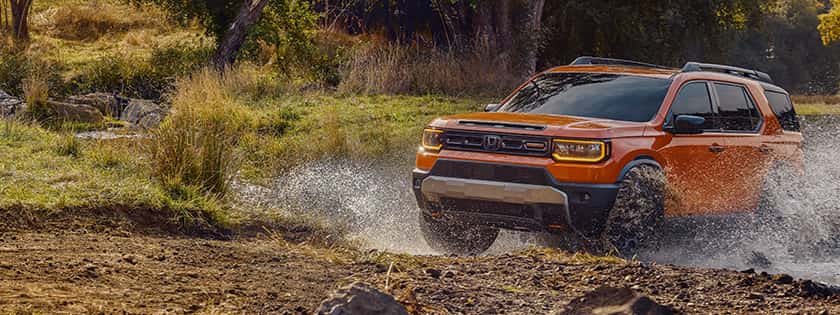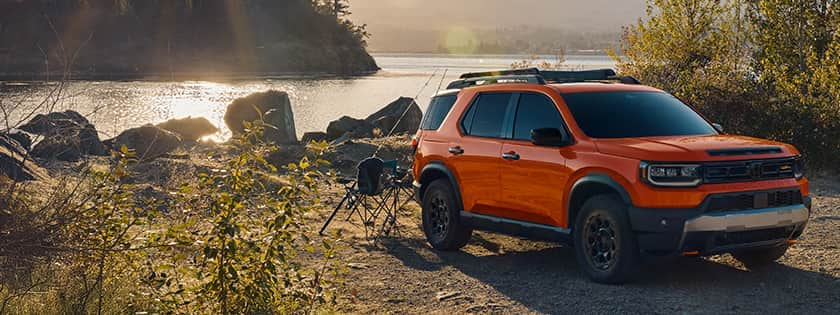According to the most recent information gathered by the Centers for Disease Control and Prevention, 35.7 percent of U.S. men and women are obese. Obesity is marked by excess body fat and a body mass index (BMI) that is greater than 30. There are certain considerations that obese drivers should keep in mind when shopping for a vehicle. Doing so is important if they are to travel in comfort and safety.
Top 10 Vehicles for Obese Drivers for 2013
Perhaps the most important concern for obese drivers is seatbelt length. The National Highway Traffic Safety Administration (NHTSA) is responsible for setting the standards that govern seatbelt length and its guidelines only require that seatbelts accommodate a 215-pound man. Fortunately, seatbelt extenders are available; these are attached to the car's seatbelt and add increased length to the belt for larger drivers. Not all manufacturers offer factory-installed seatbelt extenders, but there are aftermarket choices available for pretty much all makes and models. Some manufacturers also offer customized, longer seatbelts for drivers who are overweight. Best of all, many manufacturers — such as Ford, General Motors and Nissan — produce models with standard seatbelts that are up to 20 inches longer than the NHTSA requirements. For many overweight or obese drivers, these seatbelts may eliminate the need for extenders and customized seatbelts altogether.
See Edmunds pricing data
Has Your Car's Value Changed?
Used car values are constantly changing. Edmunds lets you track your vehicle's value over time so you can decide when to sell or trade in.

Front-passenger space is another important consideration. The cockpit needs to be roomy enough to fit the larger dimensions of an obese driver. This is not just a matter of comfort; it's also a safety issue. According to the American Automobile Association, the ideal driving position is one in which the driver's breastbone is 10-12 inches away from the center of the steering wheel. Sitting closer than 10 inches from the steering wheel increases the risk of arm, neck or facial injury from airbags in the event of a crash. It also increases the risk of driver fatigue on longer journeys. It's important for obese drivers to choose a vehicle with enough legroom to facilitate this seating position.
Obese drivers also need to take a close look at the driver seat. The driver seat should be wide and flat enough to provide comfortable accommodation for drivers of broader girth. Some models — such as certain Toyotas — are known for offering level seats with minimal side bolstering and this works well for overweight or obese drivers.
Front bench seats are also a great choice, but these days, this feature is a rarity. The only 2013 sedan to offer front bench seats is the Chevrolet Impala, and this amenity has been eliminated with the 2014 model. Only a handful of pickups and SUVs offer front bench seats, such as the Chevrolet Suburban, Chevrolet Tahoe and Chevrolet Silverado. If you're willing to shop used, you'll have a wider range of choices. Front bench seats are available in used versions of the Buick Lucerne, Cadillac DTS, Ford Crown Victoria, Lincoln Crown Victoria and Mercury Grand Marquis. The most recent year in which this feature was offered in these models is model-year 2010.
The following 10 models (listed in alphabetical order) are our picks for the best vehicles for obese drivers for 2013. Many come with standard seatbelts that are longer than NHTSA requirements. More importantly — since aftermarket seatbelt extenders are widely available — we favored models with a key obese-friendly feature that you won't be able to duplicate with an aftermarket add-on: front-passenger space. Virtually all of the models selected are top-10 class leaders for front-passenger space within their respective segments. We also gave a nod to models with front bench seats, including choices like Chevrolet's Impala and Suburban.
For more information on safety as it relates to obese drivers, check out "Obese Drivers Face Higher Risks in Cars." And for more comprehensive information on the front-passenger space offered by various models, be sure to take a look at these lists of cars, SUVs and crossovers, wagons and hatchbacks and trucks that are good for tall drivers. These models all have additional headroom, legroom and hiproom that may benefit overweight or obese motorists as well.

2. Cadillac XTS

7. Ford Fusion

10. Toyota Sequoia










